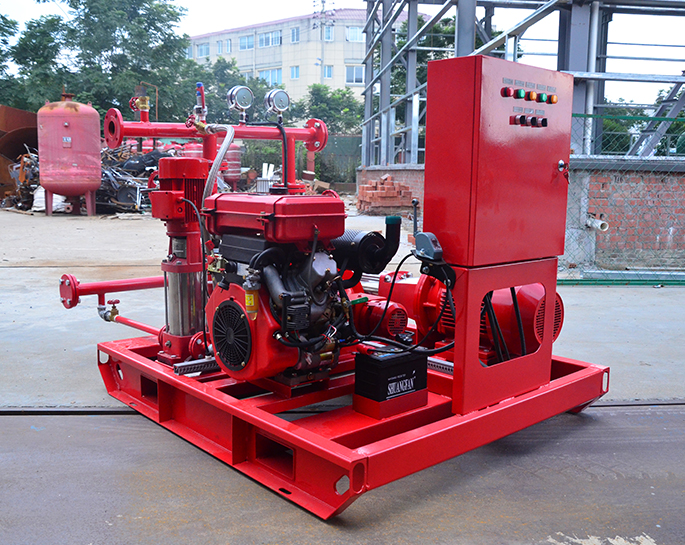What role do fire pump suction tanks play, and how are they sized for different applications?
Jan 16, 2024
Share:
Fire pump suction tanks play a crucial role in providing a stable and reliable water source for fire protection systems. These tanks are designed to store water that can be used by fire pumps to supply the required pressure and flow for firefighting operations. The sizing of fire pump suction tanks depends on various factors related to the specific application and the fire protection system's requirements. Here are some key aspects:
1. **System Demand:** The size of the tank is influenced by the expected water demand of the fire protection system. This includes factors such as the size of the building, the type of occupancy, and the potential fire hazards.
2. **Fire Pump Capacity:** The capacity of the fire pump, which is determined by factors like the pump's flow rate and pressure rating, is considered when sizing the suction tank. The tank should be able to provide sufficient water to meet the pump's requirements.
3. **Water Supply Availability:** The availability of a reliable water supply is crucial. If the water source has limitations, such as low flow or pressure, a larger suction tank may be needed to compensate for these deficiencies.
4. **Duration of Operation:** The required duration of fire pump operation is a critical factor. Suction tanks are sized to ensure an adequate water supply for the duration needed to control and extinguish a potential fire.
5. **Local Regulations:** Building codes and local regulations may specify minimum requirements for fire protection systems, including the size of suction tanks. Compliance with these regulations is essential.
6. **Backup Systems:** In some cases, redundancy and backup systems may be considered in the event that the primary water supply is compromised. This could impact the sizing of the suction tank.
7. **Water Quality:** The quality of the water in the tank is important to prevent issues like clogging or damage to the fire pump. Adequate filtration and maintenance considerations may influence tank sizing.
8. **Geographic Considerations:** Factors such as climate and weather conditions may influence the sizing of suction tanks. For example, in areas prone to drought, larger tanks may be necessary.
It's important to work with qualified fire protection engineers or professionals to accurately size fire pump suction tanks based on the specific requirements of the application and in compliance with relevant codes and standards.

1. **System Demand:** The size of the tank is influenced by the expected water demand of the fire protection system. This includes factors such as the size of the building, the type of occupancy, and the potential fire hazards.
2. **Fire Pump Capacity:** The capacity of the fire pump, which is determined by factors like the pump's flow rate and pressure rating, is considered when sizing the suction tank. The tank should be able to provide sufficient water to meet the pump's requirements.
3. **Water Supply Availability:** The availability of a reliable water supply is crucial. If the water source has limitations, such as low flow or pressure, a larger suction tank may be needed to compensate for these deficiencies.
4. **Duration of Operation:** The required duration of fire pump operation is a critical factor. Suction tanks are sized to ensure an adequate water supply for the duration needed to control and extinguish a potential fire.
5. **Local Regulations:** Building codes and local regulations may specify minimum requirements for fire protection systems, including the size of suction tanks. Compliance with these regulations is essential.
6. **Backup Systems:** In some cases, redundancy and backup systems may be considered in the event that the primary water supply is compromised. This could impact the sizing of the suction tank.
7. **Water Quality:** The quality of the water in the tank is important to prevent issues like clogging or damage to the fire pump. Adequate filtration and maintenance considerations may influence tank sizing.
8. **Geographic Considerations:** Factors such as climate and weather conditions may influence the sizing of suction tanks. For example, in areas prone to drought, larger tanks may be necessary.
It's important to work with qualified fire protection engineers or professionals to accurately size fire pump suction tanks based on the specific requirements of the application and in compliance with relevant codes and standards.







